Color Identification Phonics Worksheets for Ages 5-8
5 filtered results
-
From - To
Discover our engaging Color Identification Phonics Worksheets designed for children ages 5-8! These interactive resources provide a fun, visually appealing way to teach young learners about colors while enhancing their phonics skills. Each worksheet incorporates colorful images and simple activities that encourage kids to recognize, name, and identify colors, all while practicing essential phonetic sounds. Perfect for classroom settings or at-home learning, these worksheets help foster early literacy, promote critical thinking, and boost creativity. Watch your child's confidence grow as they master color identification and phonics in an enjoyable, educational environment. Let’s make learning fun and colorful today!
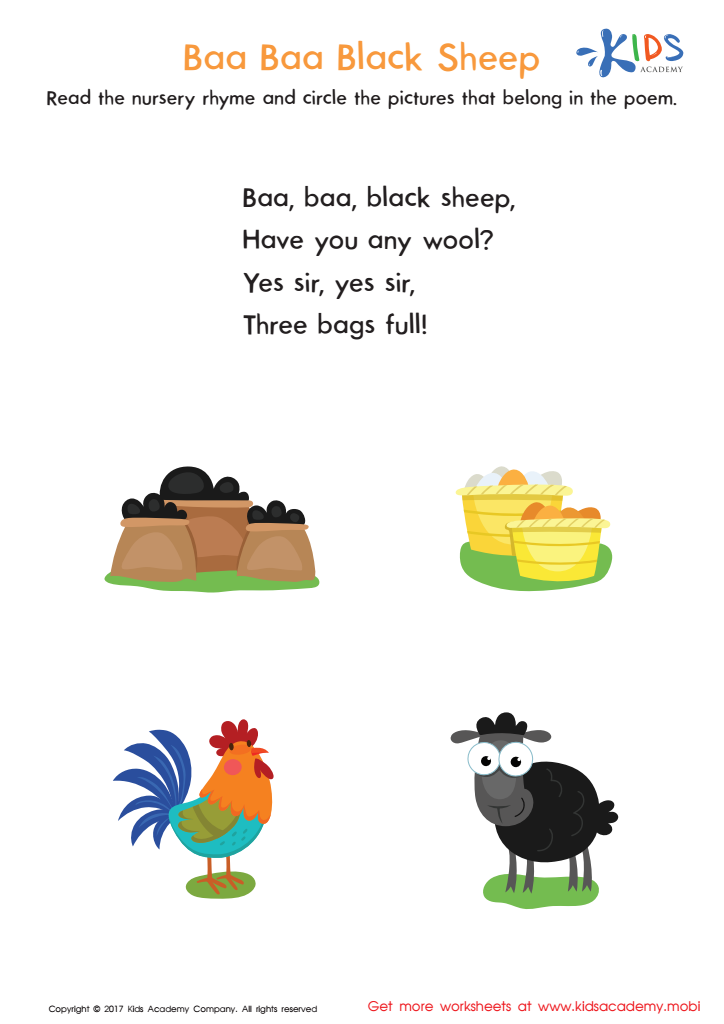

Baa Baa Black Sheep Printable
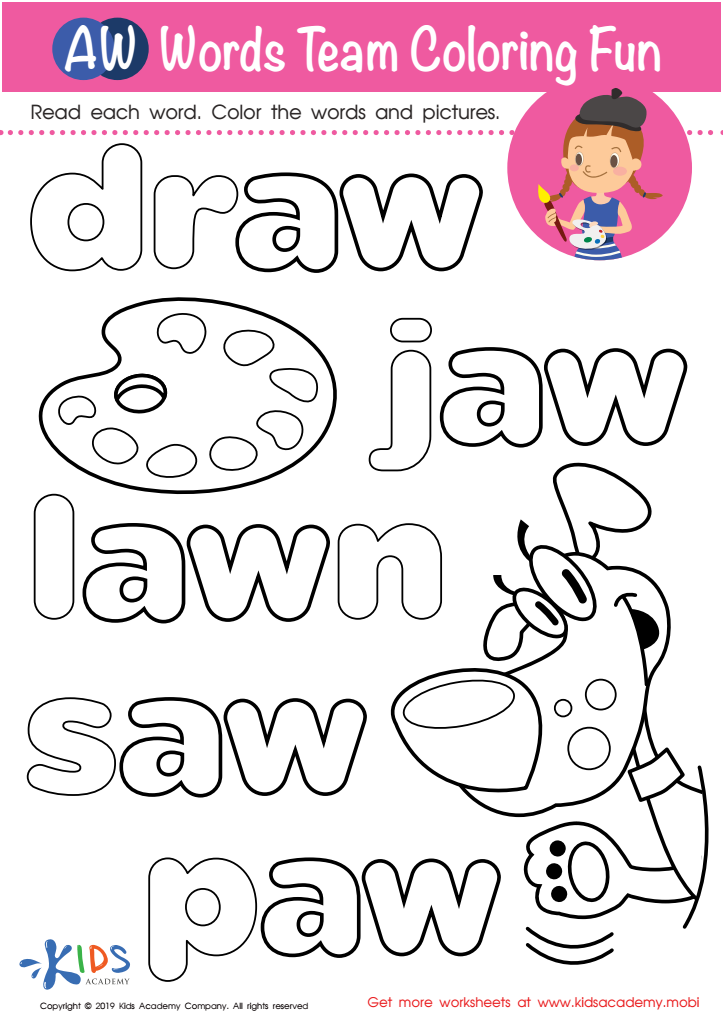

AW Words Team Coloring Fun Worksheet
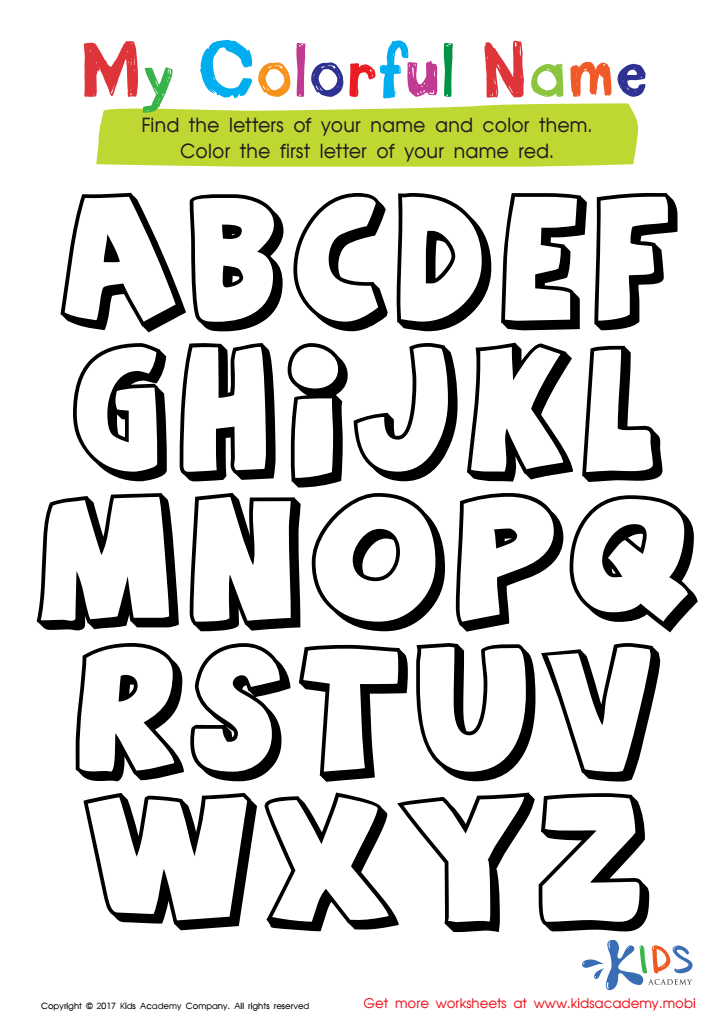

My Colorful Name Worksheet
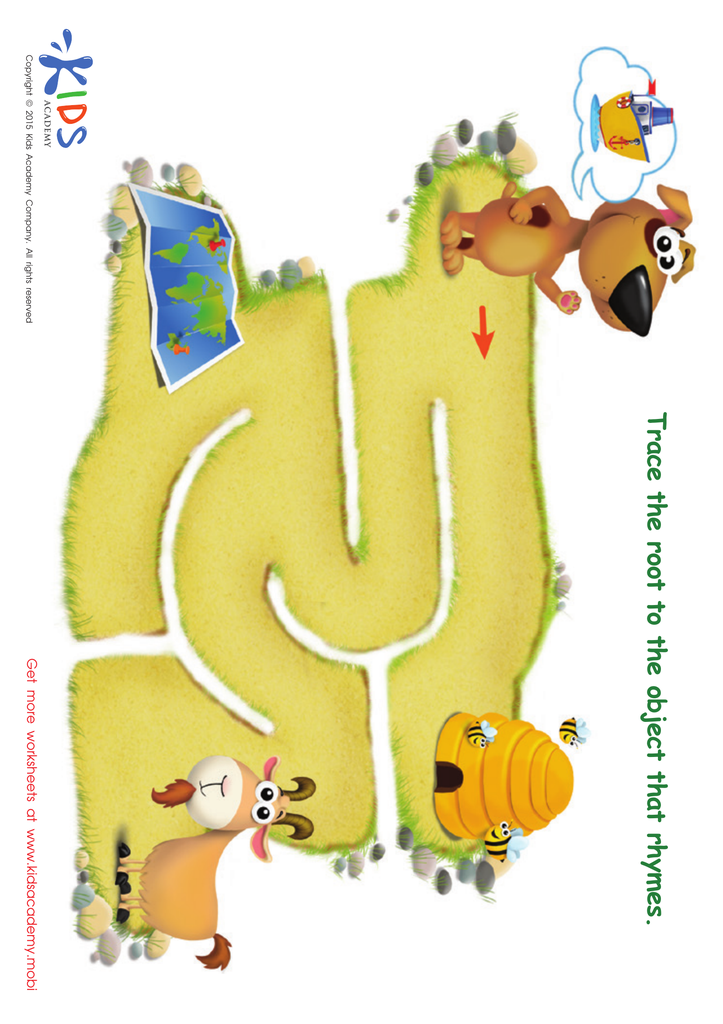

Boat Rhyming Words Worksheet
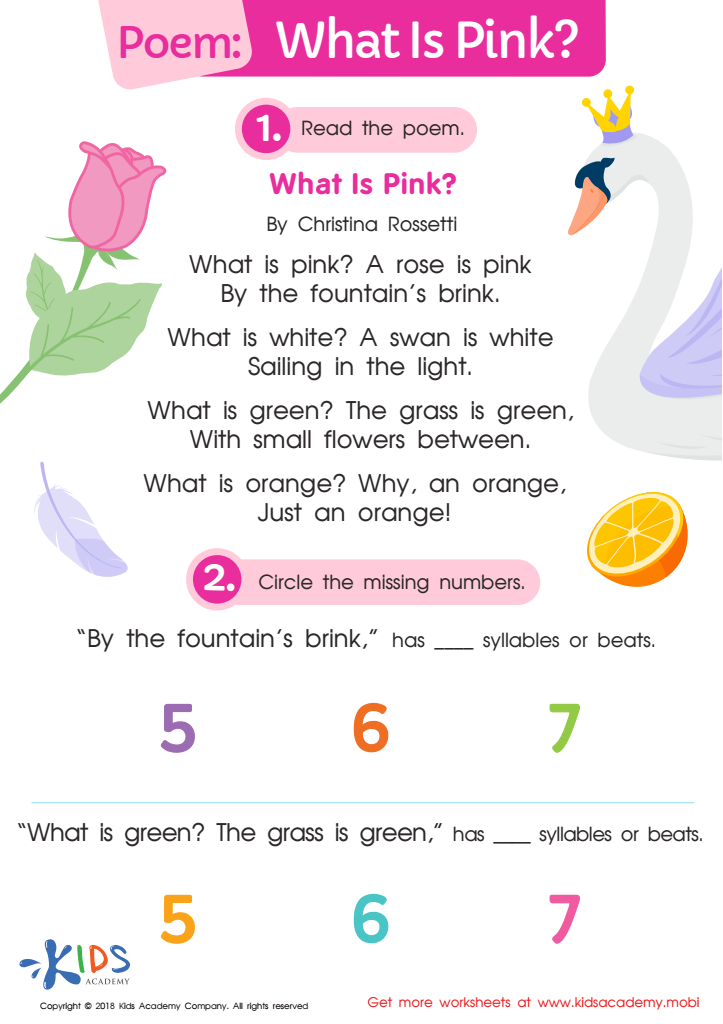

Poem: What Is Pink? Worksheet
Parents and teachers should care about Color Identification Phonics for children ages 5-8 because it lays a foundational framework for literacy skills and cognitive development. By associating colors with specific phonetic sounds, children enhance their ability to recognize letters and understand the sounds they represent. This multisensory approach engages young learners, making the learning experience both enjoyable and effective.
Color Identification Phonics not only helps improve reading and writing skills, but it also fosters creativity. Engaging with colors allows children to express themselves and develop their artistic side, which complements their verbal skills. Additionally, strong phonics proficiency is linked to better spelling and vocabulary acquisition, setting the stage for academic success as they progress through elementary school.
Furthermore, in today’s diverse learning environments, understanding various colors can promote inclusivity and engage students with different interests. Teachers and parents can use color-coded resources to create appealing learning tools that cater to various learning styles, including visual and kinesthetic learners. Ultimately, Color Identification Phonics serves as a valuable strategy for encouraging literacy development, empowering children with the skills they need to succeed in school and beyond, all while delivering a fun and interactive learning experience.

 Assign to My Students
Assign to My Students





















